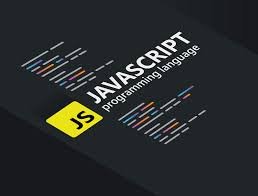
In the ever-evolving landscape of programming languages, JavaScript stands as a towering giant, powering the interactive web experiences we encounter daily. From simple web page animations to complex web applications, JavaScript’s versatility knows no bounds. In this article, we embark on a journey to uncover the magic behind JavaScript, exploring its history, features, and its profound impact on the digital world.
A Brief History of JavaScript
JavaScript was born in the mid-1990s at Netscape Communications, where it was originally conceived as a lightweight scripting language to add interactivity to web pages. Brendan Eich, a Netscape programmer, created the language in just 10 days, drawing inspiration from Java, Scheme, and Self. Initially named Mocha, it was later renamed JavaScript to capitalize on the popularity of Java.
In 1996, JavaScript was standardized under the name ECMAScript by Ecma International, establishing the language’s core features and syntax. Since then, it has undergone significant evolution, with new features and improvements introduced regularly through successive versions of the ECMAScript specification.
The Pillars of JavaScript: Simplicity and Flexibility
JavaScript’s popularity stems from its simplicity and flexibility. It employs a straightforward syntax that is easy to learn for beginners yet powerful enough to accommodate the most complex applications. Unlike traditional statically typed languages, JavaScript is dynamically typed, allowing variables to adapt to different data types at runtime.
One of JavaScript’s defining features is its first-class functions, which treat functions as values that can be assigned to variables, passed as arguments, and returned from other functions. This functional programming paradigm enables developers to write concise and expressive code, promoting modularity and reusability.
The Rise of Node.js and Server-Side JavaScript
While JavaScript was initially confined to the client-side, its horizons expanded with the advent of Node.js. Node.js, a runtime environment built on Chrome’s V8 JavaScript engine, allows developers to execute JavaScript code on the server-side. This breakthrough transformed JavaScript into a full-stack language, enabling developers to build end-to-end web applications using a unified language and toolset.
Node.js’s non-blocking, event-driven architecture proved revolutionary for building highly scalable and performant web servers. Its rich ecosystem of modules, facilitated by the npm package manager, empowers developers with a vast library of ready-to-use components, accelerating the development process.
Modern JavaScript: ES6 and Beyond
The release of ECMAScript 6 (ES6) marked a significant milestone in JavaScript’s evolution, introducing a plethora of new features and syntax enhancements aimed at improving developer productivity and code maintainability. Key features introduced in ES6 include arrow functions, template literals, classes, destructuring assignment, and the let and const keywords for variable declaration.
Subsequent iterations of the ECMAScript specification have continued to introduce innovative features such as async/await for asynchronous programming, the spread operator, and enhanced support for modules. These advancements have propelled JavaScript to new heights, making it a formidable competitor to established languages in both web development and beyond.
The JavaScript Ecosystem: Frameworks, Libraries, and Tools
JavaScript’s vibrant ecosystem is fueled by a diverse array of frameworks, libraries, and tools that cater to various development needs and preferences. Angular, React, and Vue.js reign as the most popular front-end frameworks, each offering unique approaches to building dynamic user interfaces.
On the back end, Express.js stands as the de facto choice for building web servers and APIs with Node.js, providing a minimalist yet powerful framework for handling HTTP requests and routing. Meanwhile, MongoDB, Redis, and PostgreSQL represent popular choices for database storage, seamlessly integrating with Node.js applications.
In the realm of testing, Jest, Mocha, and Jasmine offer comprehensive solutions for unit testing, integration testing, and end-to-end testing, ensuring the reliability and robustness of JavaScript applications. Additionally, tools like Webpack, Babel, and ESLint streamline the development process by automating tasks such as bundling, transpiling, and code linting.
The Future of JavaScript: WebAssembly and Beyond
Looking ahead, JavaScript’s reign shows no signs of waning as emerging technologies promise to further expand its capabilities. WebAssembly (Wasm), a binary instruction format for the web, enables high-performance execution of languages other than JavaScript in the browser, opening the door to new possibilities for web development.
Furthermore, initiatives such as Deno, a secure runtime for JavaScript and TypeScript, aim to address longstanding pain points in Node.js development, offering improved security, dependency management, and module resolution. These advancements underscore JavaScript’s resilience and adaptability in an ever-changing technological landscape.
Conclusion
JavaScript’s journey from humble beginnings to global ubiquity is a testament to its enduring appeal and versatility. As the cornerstone of modern web development, JavaScript empowers developers to create immersive and interactive experiences that shape the digital world. With its rich ecosystem, thriving community, and continuous innovation, JavaScript remains at the forefront of technology, driving the evolution of the web and beyond.
